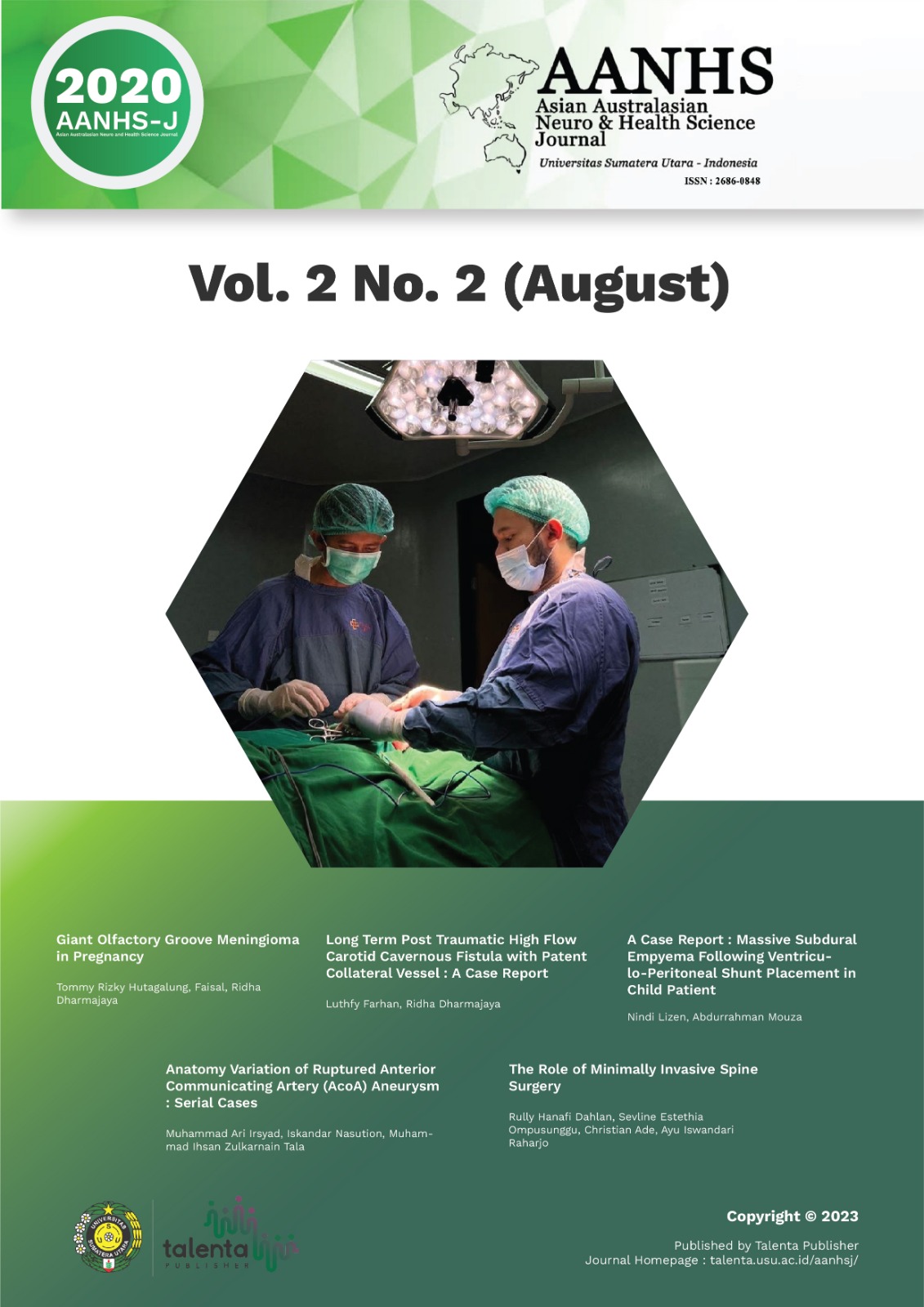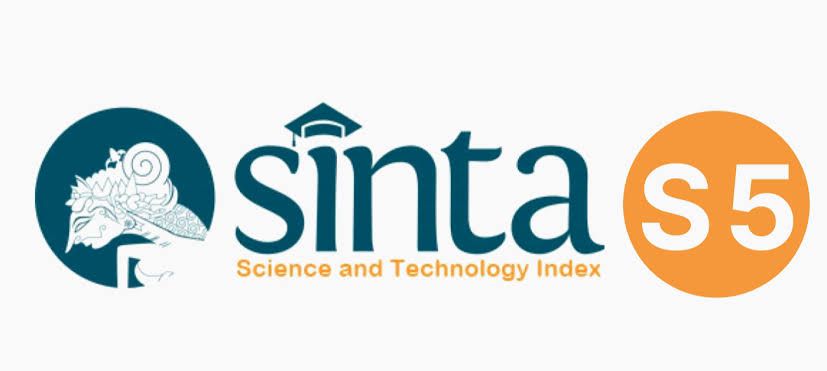Giant Olfactory Groove Meningioma in Pregnancy
DOI:
https://doi.org/10.32734/aanhsj.v2i2.4359Keywords:
meningioma, olafctory Groove, Pregnancy, NeurooncologyAbstract
Introduction: Meningioma is slow growing neoplasm cells that comes from arachnoid cap most common benign intracranial tumours. Olfactory groove meningiomas (OGM) account for 8–13% of all intracranial meningiomas. Intracranial tumors on pregnancy is a rare event, with few reports.
Case Presentation: A 36-year-old- female (G11P9A1) 34 gestational week presented to the Adam Malik General Hospital with smelling disturbances for 6 months and lossing smelling sense in the past 1 month. Slowly progression of vision disturbances for 3 months without improvement in using glasses, progressive loss of vision in both eyes for the past 1 month. CT scan and MRI revealead a solid mass lesion, with 6.3 x 4.2 x 3.1 cm. It was a supratentorial in frontal region, olfactory groove mass. The Craniotomy tumor removal was performed in this patient.
Discussion: Meningiomas are mostly silent brain tumors with slow growth, however may get detected and mostly become symptomatic during pregnancy and luteal phase of menstrual cycle due to increase in size secondary to either water retention, enhanced vascularity or progesterones are possible etiologies. The majority of meningiomas express progesterone reseptor, which can be detected also by immunohistochemistry. In fact, tumour growth when progesterone concentrations are higher, shows the role of sex hormones in the mechanism. Regardless of the status of pregnancy, symptomatic and large meningiomas require surgical resection.
Conclusion: Changes of plasma concentration hormones during pregnancy and their effect on meningioma growth in the second and third trimester are crucial and critical. The management of brain lesions during pregnancy required professional collaboration between neurosurgeons, obstetricians and anesthesiologists.
Downloads
Downloads
Published
How to Cite
Issue
Section
License
Copyright (c) 2020 Asian Australasian Neuro and Health Science Journal (AANHS-J)

This work is licensed under a Creative Commons Attribution-NonCommercial-NoDerivatives 4.0 International License.
The Authors submitting a manuscript do understand that if the manuscript was accepted for publication, the copyright of the article shall be assigned to AANHS Journal.
The copyright encompasses exclusive rights to reproduce and deliver the article in all forms and media. The reproduction of any part of this journal, its storage in databases and its transmission by any form or media will be allowed only with a written permission from Asian Australasian Neuro and Health Science Journal (AANHSJ).
The Copyright Transfer Form can be downloaded here.
The Copyright form should be signed originally and sent to the Editorial Office in the form of original mail or scanned document.














